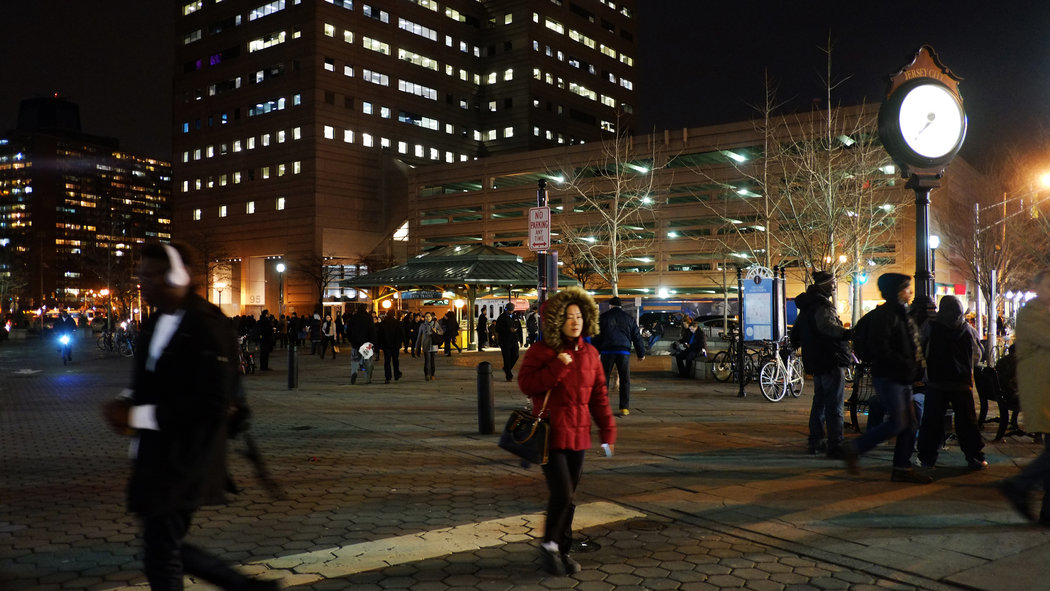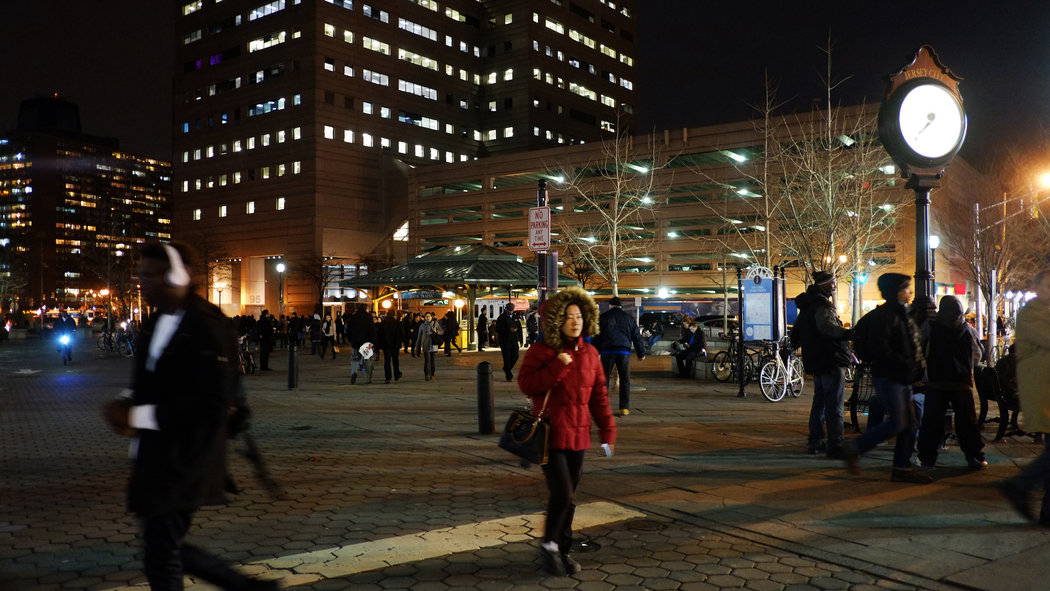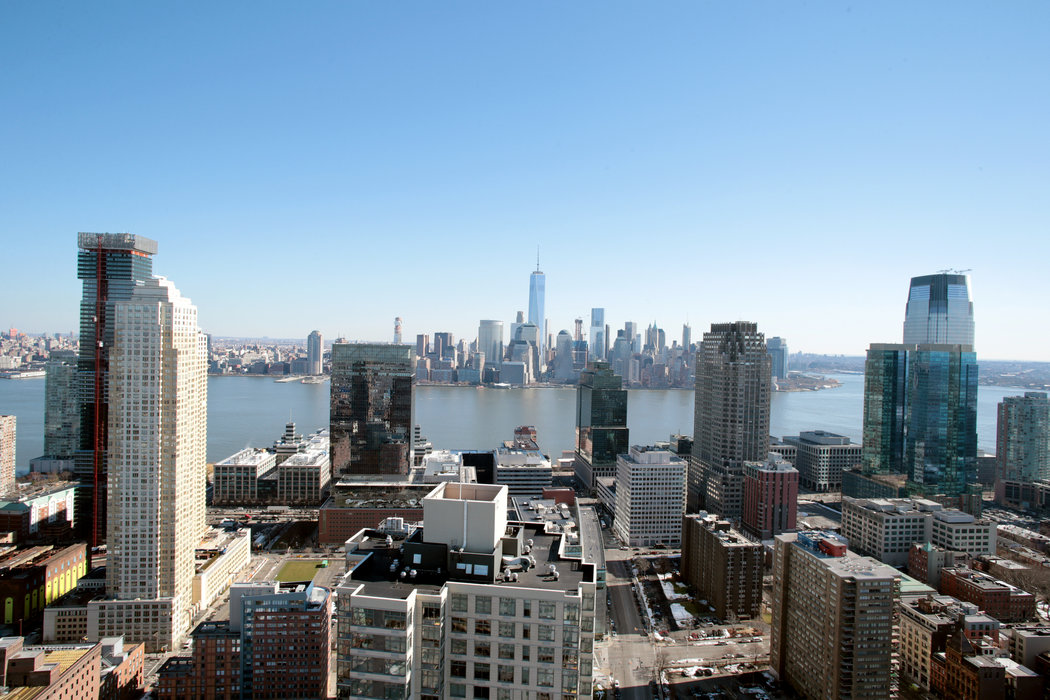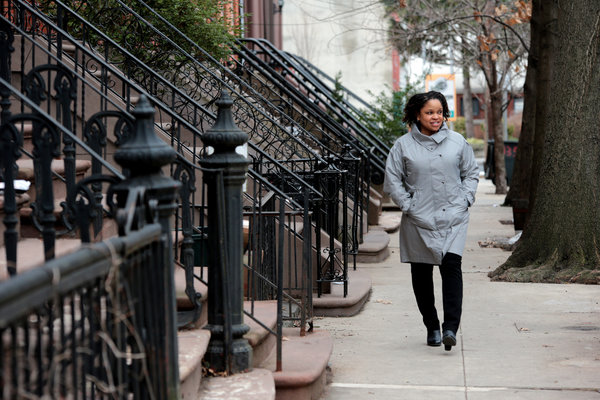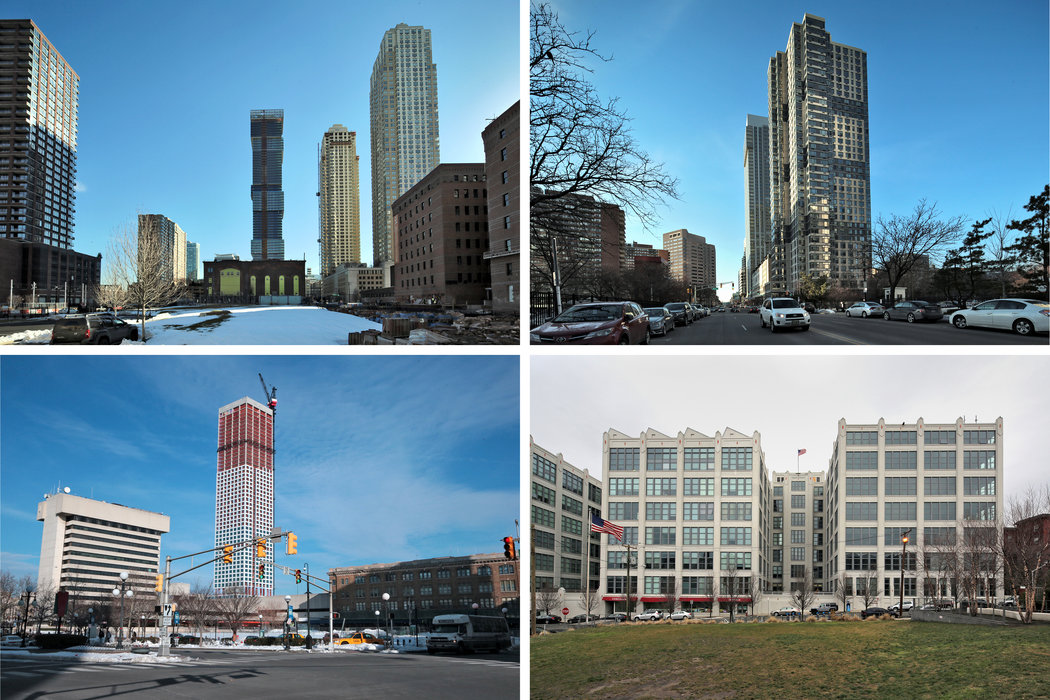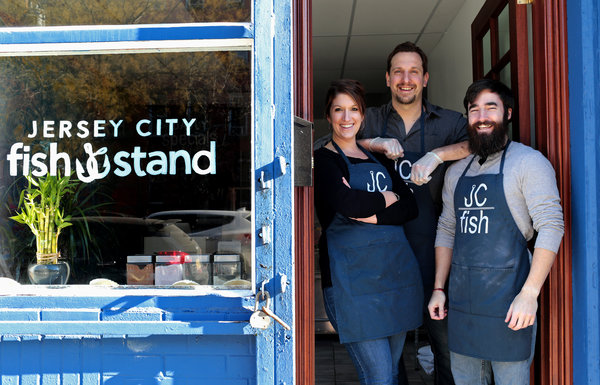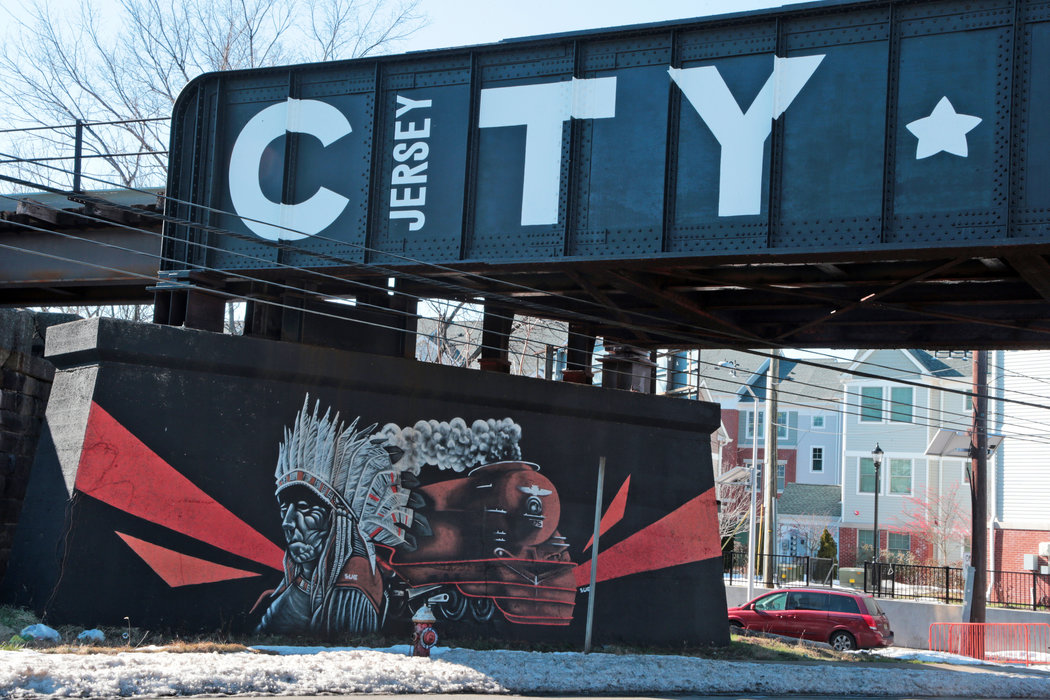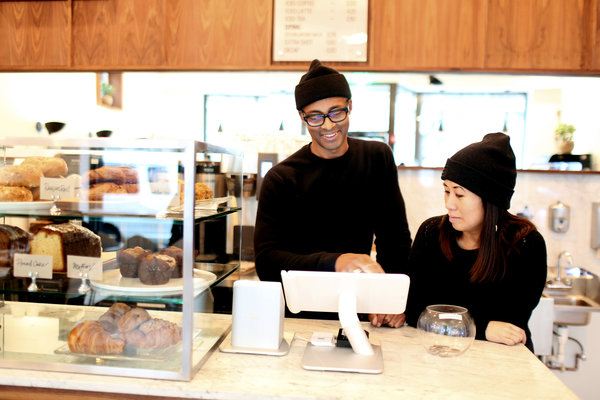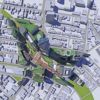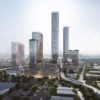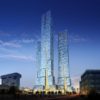CreditLuiz C. Ribeiro for The New York Times
Jersey City is no longer just another gritty town on the wrong side of the Hudson River, dismissed by apartment hunters. As its population soars, new housing rises and buyers get wind of the quick train commute it offers to New York, Jersey City is shedding its dingy image and emerging as a destination of choice.
An influx of new arrivals priced out of Manhattan and Brooklyn is helping make it the fastest growing metropolitan area in New Jersey, with some 262,000 residents in 2014, up nearly 6 percent from 2010, according to United States census data. And with the inventory of available homes at a three-year low, bidding wars are driving up prices downtown, pushing newcomers farther inland. Even the city’s 38-year-old mayor, Steven M. Fulop, is leaving downtown — for a single-family house he bought last summer in Jersey City Heights, at the northern end of the city.
Developers are rushing to build, with some 7,000 units of housing under construction and another 19,000 approved — more than in any other city in the state, according to the mayor’s office.
Randy Stringer, left, and Marcus Troy with their dog Barty in the apartment they bought in October in the Canco Lofts near Journal Square. Credit Luiz C. Ribeiro for The New York Times
Downtown, the new restaurants lining a pedestrian promenade near the Grove Street PATH station are furnished with rustic tables and hanging Edison bulbs, telltale signs that the hipsters have arrived. Around the corner, on Erie Street, a bank of strollers parked outside the Three Little Birds children’s center reminds passers-by that the neighborhood is now decidedly family friendly. Coffee shops, restaurants and art galleries are opening in areas like Journal Square, the Powerhouse Arts District and even Bergen-Lafayette, which has struggled with poverty and high crime for years.
“Three or four years ago, when you would mention Jersey City to people who didn’t know the area, you’d get a concerned look,” said Natalie Miniard, the owner of JCity Realty. “Now everybody wants to know more. It’s a much different conversation.”
That conversation usually begins with how quickly one can get from Jersey City to Manhattan by train. From the Grove Street PATH station downtown, it takes fewer than 10 minutes to get to the World Trade Center Transportation Hub and 20 minutes to get to West 33rd Street.
But growth also means growing pains. Traffic is worse in the 21-square-mile city, say residents and shopkeepers. And the growing population could strain the aging infrastructure, including public transportation and schools. New developments might translate to more housing options for renters and buyers with deep pockets, but the changing demographics could have a lasting and, some feel, deleterious effect on the fabric of a city that prides itself on ethnic and economic diversity.
“Everything is changing really quickly, so we’re trying to change with it,” said Kathryn Moore, 51, the president of the Powerhouse Arts District Neighborhood Association, which has been a critic of some of the high-rises that have replaced historic warehouse and factory buildings in that neighborhood.
The view of the Hudson River and Lower Manhattan as seen from 70 Columbus, a luxury rental that opened in November. Credit Luiz C. Ribeiro for The New York Times
For some newcomers, these changes translate to housing stock that is a bargain compared to that of New York City.
Consider the $510,000 condo that Randy Stringer and Marcus Troy bought in Journal Square last October. At about 1,233 square feet, it has two bedrooms, two baths and a den.
In Manhattan, where they initially looked, the median price for a two-bedroom was $1.67 million in the fourth quarter of 2015, and in Brooklyn it was $850,000, according to data provided by the appraisal firm Miller Samuel and Douglas Elliman Real Estate. “When 850 square feet is considered a luxury two-bedroom, that’s not my standard,” said Mr. Stringer, 46.
Moving from Washington, D.C., for Mr. Stringer’s job, the couple left behind a 2,300-square-foot, century-old townhouse with original woodwork. After renting briefly in Manhattan and then in the Newport neighborhood of Jersey City, they came upon Journal Square, and realized they might not have to downsize as much as they had feared.
In Journal Square, “there are still all kinds of bargains,” said Mr. Stringer, who works for BNY Mellon in Manhattan. “It’s not as gentrified, let’s be clear, but you can see the trajectory that it’s on.”
The apartment they bought, in Canco Lofts, a converted American Can Company factory, has 14-foot ceilings and 11-foot windows. It sits next to Mana Contemporary, a vast tobacco warehouse that was converted to an arts center in 2011, with galleries and studio space. Among Mana’s exhibits is the 15,000-square-foot Model Museum of the architect Richard Meier.
“You can never find space like that in Manhattan,” said Mr. Meier, who moved his museum to Jersey City from Long Island City, Queens, in 2014. “It just doesn’t exist.”
The area around Mana, which is about a 10-minute walk from the Journal Square PATH station, is in transition. A 265-unit rental building, 25 Senate Place, opened in December opposite Mana. And in April, Modcup, a coffee business, will open its second cafe and roasting facility on the building’s ground floor. “We kind of like the fact that we open up in places that people wouldn’t necessarily expect,” said Travas Clifton, 40, an owner of Modcup. “They become destination spots.”
The Journal Square neighborhood, which is in the center of the city, west of downtown and south of the Heights, is bracing for more change. With the Jersey City waterfront and downtown nearly built out, developers are moving inland, plucking up parcels close to transit; the area around the Journal Square PATH station has become a prime destination.
“In my opinion, there is no room on the waterfront left,” said Jonathan Kushner, the president of the KRE Group, which is developing Journal Squared, a three-tower complex, with National Real Estate Advisors. “If you’re going west, it was our view that you needed to be within 500 feet of the PATH.”
Oona Jackson Moore, the president of the Van Vorst Park Association, walks near her home downtown, where she has lived for 14 years. Ms. Moore is concerned about how development could impact diversity and infrastructure in the city. Credit Luiz C. Ribeiro for The New York Times
Construction is underway on the first building, a 53-story rental tower at Pavonia and Summit Avenues. The tallest building will be 70 stories, and the mixed-use complex will have 1,838 rental apartments and 36,000 square feet of retail, including a food market that Mr. Kushner likened to Chelsea Market in Manhattan.
Other residential towers are also in the works near the Journal Square station, including two high-rises from Kushner Companies and KABR Group, one of which will replace the former headquarters of The Jersey Journal, which gave the square its name.
For now, the neighborhood lacks the sort of retail that would make it a destination, or a place to spend an evening out. “You don’t have high-end anything,” said Kim Beier, an agent for Halstead Property.
But that is not dissuading buyers and renters who find themselves priced out of not only New York, but also downtown Jersey City. In 2015, the average price for a condo downtown was $685,161, nearly three times as high as in Journal Square, where the average price was $233,800. And the average rent for a one-bedroom downtown was $2,465 a month last year, compared with $1,593 a month in Journal Square, according to data provided by JCity Realty. The Journal Square PATH station, one stop after Grove Street, adds another five minutes to a ride into Manhattan.
“If they can’t buy now in downtown or Hoboken, I slowly educate them to Journal Square,” Ms. Beier said. “It’s kind of like when people started buying in Brooklyn and Queens — it was a slow education, and all of a sudden it caught on fire.”
Jersey City is in the midst of a building boom, with 7,000 units under construction and another 19,000 units approved. Clockwise from top left: the Powerhouse Arts District; 50 and 70 Columbus; the Canco Lofts; and the rising Journal Squared.
As the city grows and gentrifies, some longtime residents worry about what might be lost, particularly when luxury towers like the 50-story 70 Columbus, which opened in November near the Grove Street PATH station, continue to add an upscale flavor to a neighborhood that was down at the heels not so long ago.
“I used to see more diversity — much more diversity — and I see less of it now,” said Oona Jackson Moore, the president of the Van Vorst Park Association, a neighborhood group. “I’m all for development, but I want to see a balance where you don’t see people being displaced.”
When Ms. Moore moved downtown 14 years ago with her husband, James Moore, crime was her greatest concern, so she helped start a neighborhood watch. Now, she said, the city needs to focus on managing growth. Developers “are coming into an environment that already exists, it’s not a blank slate,” she said, and growth “shouldn’t take away from the quality of life of the people who are already living here.”
The city faces a number of challenges, most notably its schools. After nearly three decades of state oversight, Jersey City will regain full control over its schools this spring. Some, like Dr. Ronald McNair High School, a magnet school, are among the top in the state, and the city has sought-after charter schools. Still, 40 percent of its schools fail to meet state standards. The graduation rate of 73 percent lags behind the state average of 90 percent. “The school system in Jersey City has been a mixed bag,” said Mr. Fulop, the mayor, describing the progress as “slow and very fragile.”
But for younger residents without children, like John and Jill Sabochick, a couple who bought a 100-year-old single-family house in Bergen-Lafayette last October, schools are not a huge concern. “We still need to do more of our own research, in time,” said Ms. Sabochick, 32.
From left, Jill and John Sabochick and their business partner, Kevin Pipchick, the owners of the Jersey City Fish Stand at 508 Jersey Avenue. They opened the shop in December after lamenting a dearth of specialty grocers in the city. Credit Luiz C. Ribeiro for The New York Times
In December, she and Mr. Sabochick, 31, opened Jersey City Fish Stand on Jersey Avenue, with another partner, Kevin Pipchick, 31. “We couldn’t find any fresh seafood,” Mr. Sabochick said. “So we decided to open a store.”
The Sabochicks are among the newcomers who have been buying and restoring homes in the Bergen-Lafayette neighborhood, which borders Liberty State Park and is on a light-rail line to downtown, where riders can catch the PATH train to New York. The area has a mix of 19th-century Victorians, brownstones and warehouses. The average price for a single-family home was $229,772 in 2015, up 33 percent from 2014, when it was $173,130, according to JCity Realty.
But many of the buildings are far from move-in ready. “There’s a lot of sweat and money you have to throw into it,” Mr. Sabochick said of the colonial-style house with five bedrooms and one-and-a-half baths the couple bought for about the average price, spending another $50,000 on renovations. “You have to figure out how to hang a chandelier on gas pipes from 100 years ago.”
The neighborhood is very much in transition, with some blocks lively and others neglected. Although crime is falling citywide, it remains high in some pockets, including Bergen-Lafayette. “Moving the needle in certain areas is very, very tough,” Mr. Fulop said.
“You can’t walk around with your headphones on like you live downtown,” said John Fathom, 39, the art director of 660studios, a space for artists to create and exhibit art on Grand Street in Bergen-Lafayette. “This is still survival of the fittest.”
Grand and Merseles Street in Bergen-Lafayette, a neighborhood that has been attracting newcomers priced out of downtown. Credit Luiz C. Ribeiro for The New York Times
On Suydam Avenue, a block from the Liberty State Park Light Rail Station in Bergen-Lafayette, the 83-unit Baker Building will open in April. The five-story brick rental is rising next to several run-down rowhouses and dilapidated warehouses.
“How do you attract single women?” said John D. Fio Rito, the managing member of Point Capital Development, the site’s developer. Mr. Fio Rito worries that prospective tenants might not want to walk down such a block late at night. “I can’t just rent to 20-year-old males,” he said.
To make the property more inviting, Mr. Fio Rito plans to provide amenities like on-site parking, a roof deck and a gym. “Once you’re here, there’s nothing around,” he said. “So I want you to be happy here.”
Rents will start at around $1,700 for a one-bedroom one-bath, $2,000 for a two-bedroom two-bath, and $2,500 for a three-bedroom.
Last year, the average rent for a one-bedroom in Bergen-Lafayette was $1,230 a month and a two-bedroom was $1,484, according to JCity Realty.
Charles Boyd and Shane Clark at the Grind Shop, a cafe they and another partner opened in December on Communipaw Avenue in Bergen-Lafayette. Credit Luiz C. Ribeiro for The New York Times
Mr. Fathom, of 660studios, said the neighborhood had changed since he responded to a Craigslist ad for an artist’s loft space 12 years ago. “It was just a drug neighborhood,” he recalled. “It wasn’t a place you wanted to be late at night.”
Over the years, 660studios leased more space in its Grand Street building, eventually taking it over. And in January, Mr. Fathom and his partners opened the Archetype Gallery on the ground floor, with a grand opening planned for March.
“People are looking for things to do,” he said. “We’re seeing walking traffic, we’re seeing new businesses open.”
One such business is the Grind Shop, a cafe that opened in December on Communipaw Avenue, serving artisanal doughnuts, Balthazar pastries and La Colombe coffee. “We’re kind of a lone wolf,” said Shane Clark, 37, one of the store’s owners.
While neighborhoods like Bergen-Lafayette are just beginning to get attention, the Powerhouse Arts District, an industrial swath of warehouses and factories downtown, is in full swing. Of the 20 residential developments planned or under construction downtown, five are in the 12-block neighborhood roughly bounded by Second Street, Washington Street, Steuben Street and Marin Boulevard, according to data provided by the Powerhouse Arts District Neighborhood Association.
To the disappointment of some residents, historic structures have been demolished, despite the city’s 2004 redevelopment plan, which called for preserving the historic buildings and fostering an arts community. The result, say critics, is a neighborhood that is a hodgepodge of low-rise industrial buildings interspersed with cold, austere towers.
Among the new arrivals is the Morgan at Provost Square, a 38-story tower that opened in October. The 417-unit rental is the first phase of a three-building complex from Toll Brothers and Aecom that will eventually include a performing arts center and retail. Another development, Trump Bay Street, a 50-story rental tower, will open just outside the Powerhouse district at 65 Bay Street at the end of the year.
“What’s happening in our neighborhood is happening in a lot of other little neighborhoods,” said Ms. Moore of the Powerhouse Arts District Neighborhood Association. “So people are wary that what happened to us is going to happen to them.”



